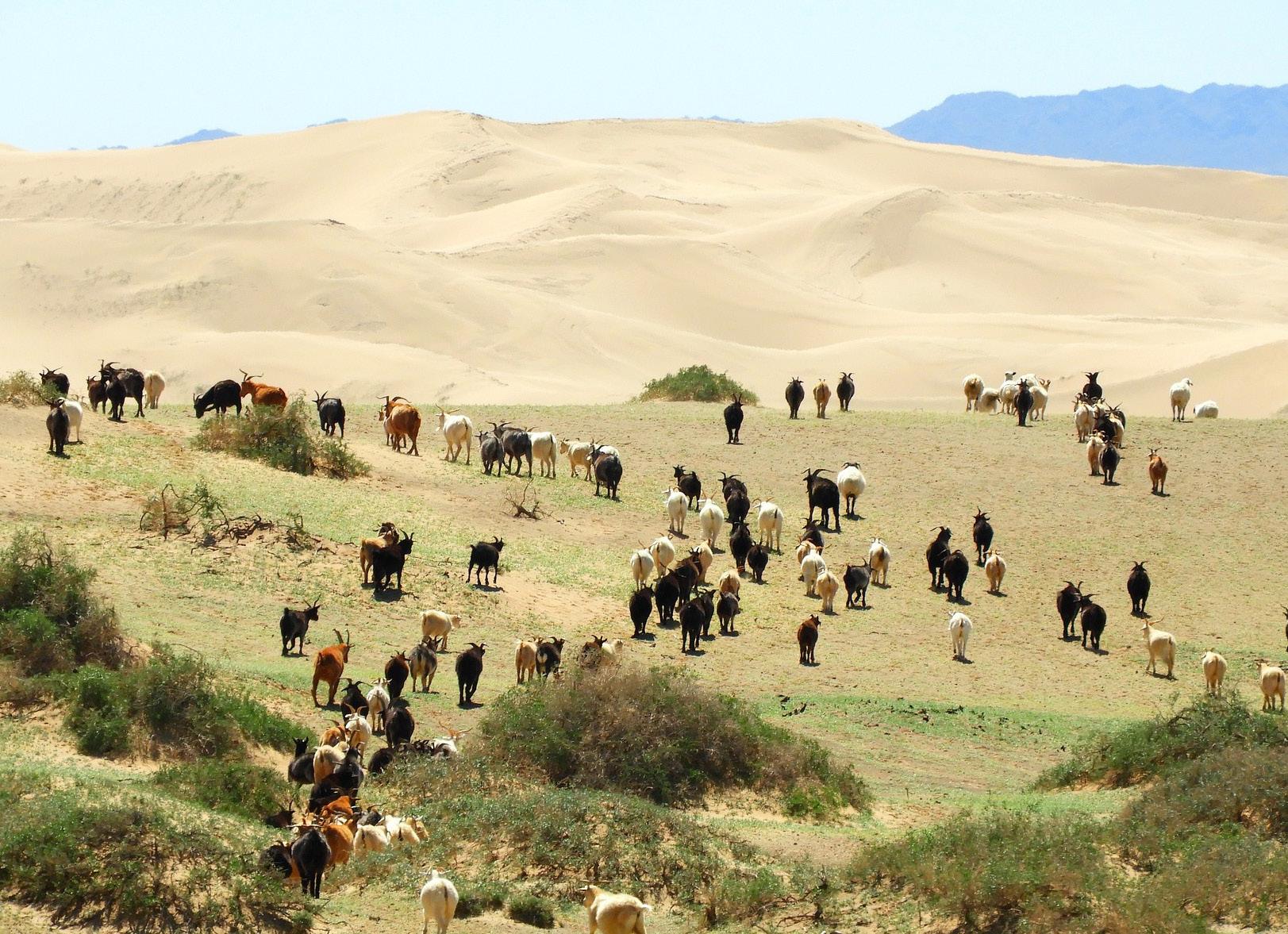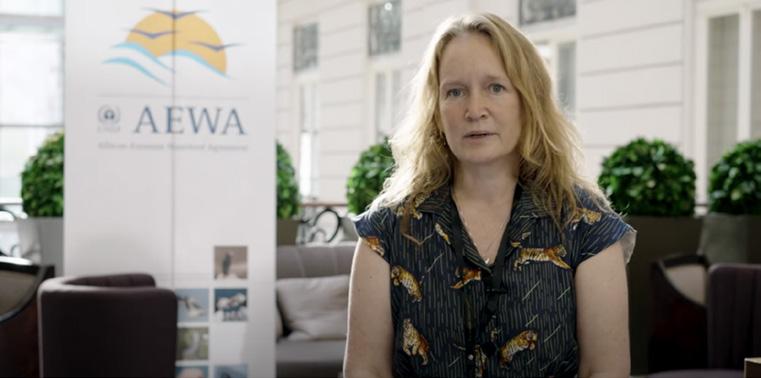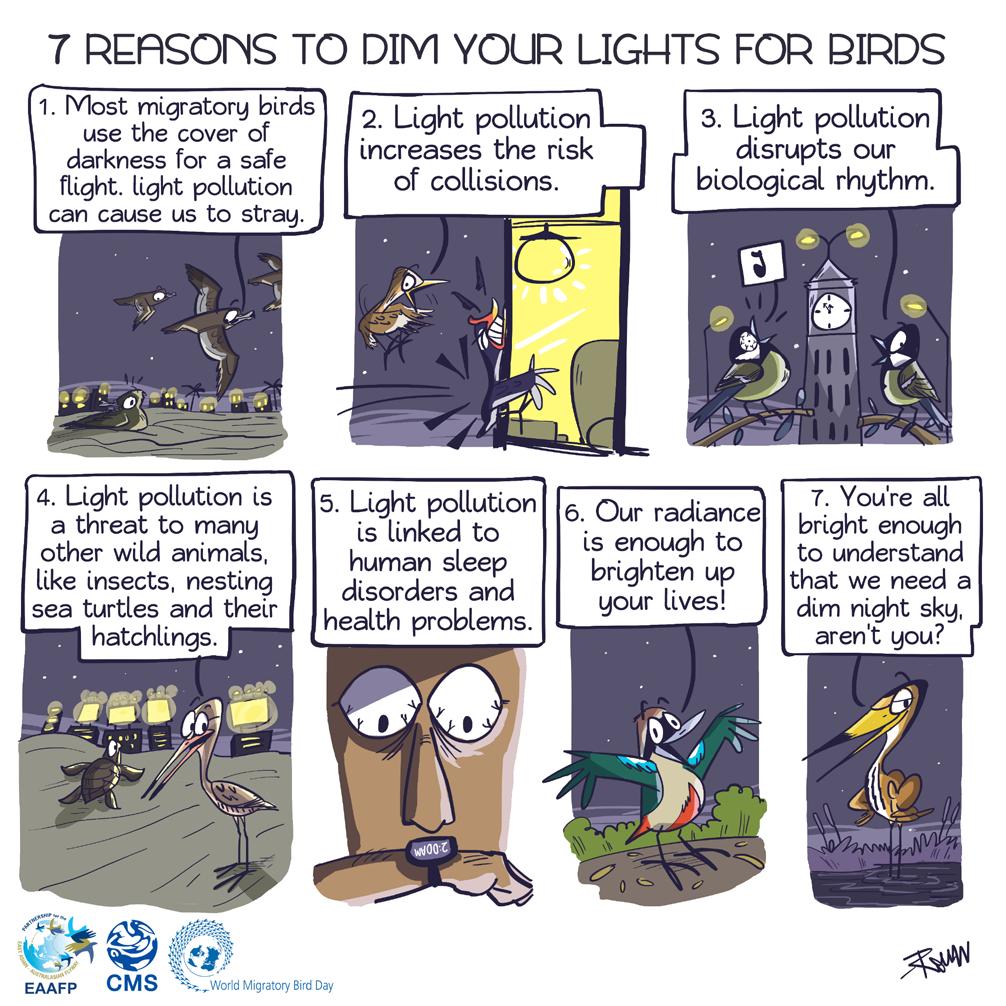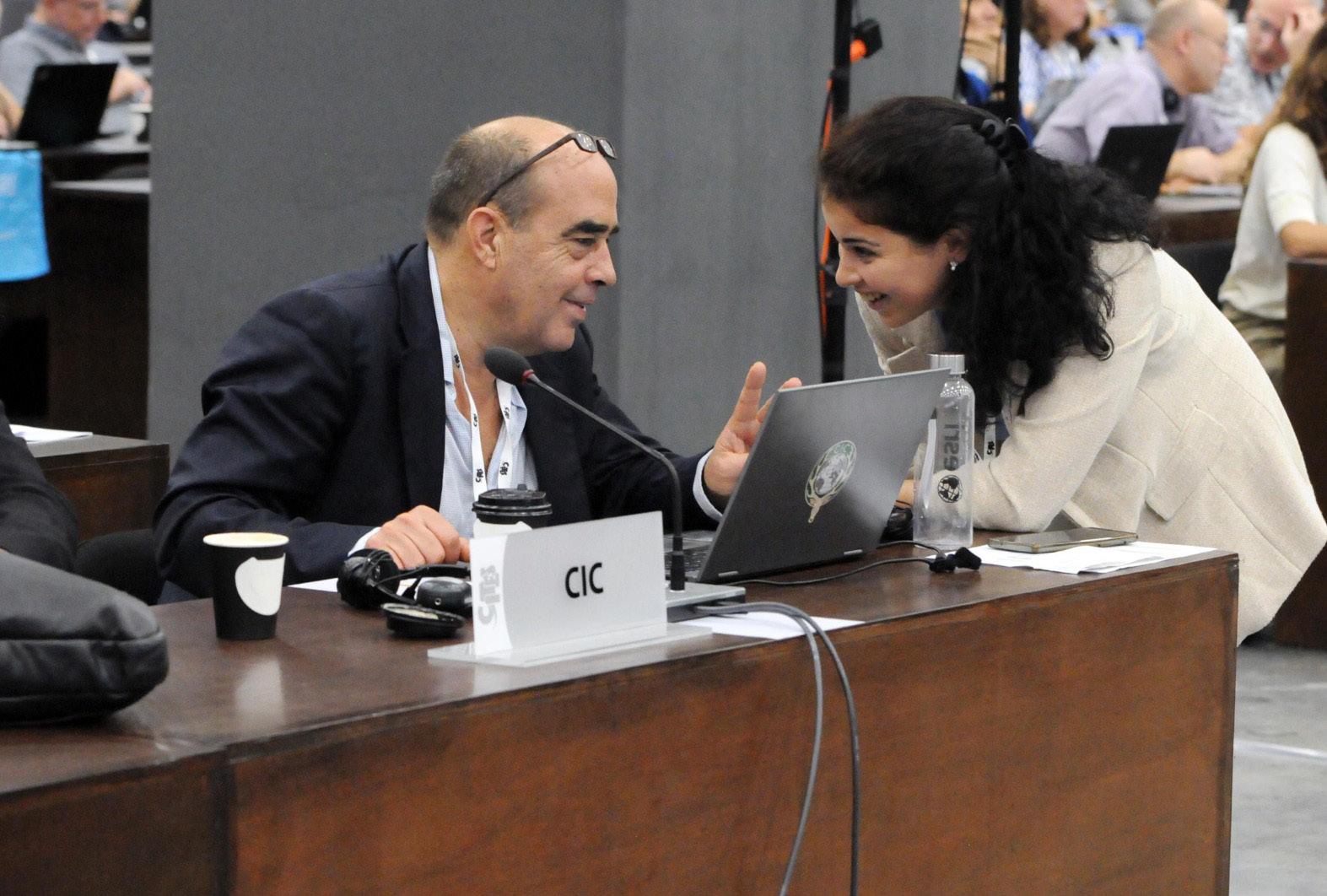
13 minute read
INTERNATIONAL PRESENCE
THE FLYING VETS PROJECT SECURES $2 MILLION IN FUNDING FROM UNEP
The Flying Vets Project in Mongolia has secured $2 million in funding, following a successful application to UNEP’s Nature for Health (N4H) initiative.
The CIC is one of the agencies implementing the Flying Vets Project, which looks to strengthen Mongolia’s ability to implement a One Health approach in dealing with wildlife diseases, including zoonoses.
The N4H initiative is run by the United Nations Environment Programme (UNEP), and was created to reduce the risk of future pandemics and by fostering locally developed, integrated approaches to secure the health of people, animals and the environment. Supported by the Government of Germany, the initiative brings together leading UN agencies, Intergovernmental Organisations and civil society groups.
The Flying Vets application was submitted to UNEP earlier this year following a series of workshops on the project in Mongolia. Three Mongolian Ministers provided endorsements in support of the application; the Ministry of Food, Agriculture and Light Industries (MoFALI), the Ministry of Health (MoH), and the Ministry of Environment and Tourism (MOET).
With this funding secured, the project is planned to go ahead with a conventional UN based approach to running an in-country project, while being complimented by cutting edge initiatives which make a difference on the ground.
The road ahead will be focused on developing four core working areas identified as part of the workshops. Each working area will look to strengthen gaps within Mongolia’s wildlife monitoring and management infrastructure, with key tools and processes for each having already been identified.
• Data Collection and Analytics • Infrastructure and Logistics • Capacity Building • Technology and Innovation


The Flying Vets was launched in April, 2021. It was born out of Flurina Hammer’s (CIC Member and Flying Vets Board Member) participation in the 2022 Mongol Derby, and her desire to contribute towards the CIC’s work in supporting wildlife and human well-being.
With the Derby serving as an international platform to raise awareness and funding for the project - with Flurina finishing 12th in the race - the Flying Vets has come a long way in the past six months. Two workshops have been held in Ulaanbaatar, Mongolia, bringing together the animal, human and environmental sectors to explore the current state of disease monitoring and management in the country.

Among the outcomes of the workshops was the identification of gaps in the country’s wildlife disease surveillance measures, the actions needed to promote inter-sectoral collaboration, as well as the steps required to address any issues of note.

INTERNATIONAL PRESENCE One Health Day

November 3rd was One Health Day, an international campaign that brings attention to the need for a One Health trans-disciplinary approach towards solving critical global health challenges. Our encroachment into wild and natural spaces is an issue that grows with every passing second. Wildlife is an entangled part of human existence, and the threat of infectious wildlife diseases is one that has to be addressed now rather than later.
The COVID-19 pandemic serves as a stark reminder of the potential consequences of inaction.
With that in mind, what are the potential solutions to these issues?
As part of One Health Day, FAO and the EcoHealth Alliance published a study which suggests that the integration of the natural resource sector into efforts to mitigate the risk of emerging infectious diseases is essential. The Flying Vets projects is one real world example of this idea in practice.
The Flying Vets is an initiative of the CIC and the World Organization for Animal Health (WOAH), which looks to strengthen Mongolia’s ability to implement a One Health approach in dealing with wildlife diseases, including zoonoses.
By bringing together stakeholders from the environment, human health and veterinary sectors, we can work on solutions to critical issues such as wildlife disease surveillance in a more effective and timely manner.
Supporting The Flying Vets – and other projects that bridge the gap between different disciplines to solve global health issues – will be essential if we are to build towards a sustainable future. For more information on The Flying Vets, visit our dedicated webpage on the project.
INTERNATIONAL PRESENCE COUNTRIES COMMIT TO THE FUTURE OF MIGRATORY WATERBIRD CONSERVATION AT AEWA MOP8

Several nations have recently committed to the future of migratory waterbird conservation at the world’s biggest international conference on this topic.
The Eighth Session of the Meeting of the Parties to the African-Eurasian Migratory Waterbird Agreement (AEWA MOP8) was hosted in Budapest, Hungary on 27-30 September, 2022.
AEWA is an intergovernmental treaty - administered by the United Nations - dedicated to the conservation of migratory waterbirds and their habitats across Africa, Europe, the Middle East, Central Asia, Greenland and the Canadian Archipelago.
AEWA hosts their MOP to give an opportunity for governments to overview bird conservation activities around the world while exploring possible actions for the future. The AEWA meeting was among the largest conferences focusing on migratory waterbird conservation in recent history. Over 200 people were in attendance, representing 45 different countries within the deliberations.
AEWA MOP8 was invited to take place in Budapest by the host country government. The Deputy Prime Minister of Hungary, Dr Zsolt Semjén, was among the speakers at the opening ceremony to welcome participants to the event. This meeting came at a particularly critical time, as new reports suggest that half of bird species are currently in decline. A further eighth of species are at threat of going extinct.
Over the course of AEWA MOP8, 16 resolutions and new guidelines were agreed upon by the parties in attendance, helping to secure the future of many of the 255 species covered under AEWA.

To give an example, one outcome of the event was the introduction of a new international action plan for the Common Eider, a sea-duck species which is currently in decline. It is hoped that these new measures will help recover populations in the numerous areas where this species can be found.
As keen supporters of migratory waterbirds and their conservation, the CIC and Delegations of the CIC were proud to be sponsors of the event. Hunters are one of the few stakeholders with a vested interest in the health of waterbird populations, and the CIC remains dedicated to building cooperation within the hunting community for the benefit of their conservation.
Dallas Safari Club (DSC), Leica Camera AG and RAUCH were among the other sponsors of the AEWA MOP8. AEWA MOP8 Summary Video


Jacques Trouvilliez, AEWA Executive Secretary, on the CIC and Migratory Waterbird Conservation
Iben Hove Sørensen, Head of the CIC Migratory Bird Management Specialist Group on Stakeholder Involvement in Migratory Waterbird Conservation



INTERNATIONAL PRESENCE Dim The Lights For Birds At Night!
World Migratory Bird Day 2022

The CIC joined in celebrating World Migratory Bird Day (WMBD) on October 8th.
WMBD is a bi-annual event hosted by AEWA – the Agreement on the Conservation of African-Eurasian Migratory Waterbirds – which looks to raise awareness on the importance of migratory waterbirds and the cooperation required to conserve them. As part of this year’s theme, WMBD brought attention to the impact of light pollution on migratory birds.
In support of this theme, we challenged our friends and members to reduce the amount of light they produce when visiting coastal areas during May’s celebration of WMBD.

Since then, we have heard several accounts of people looking to mitigate their impact on birds by limiting the amount of light they produce when going on hunts. We extend our thanks to everyone that got involved!
As one of the few stakeholders with a vested interest in migratory waterbirds, the CIC understands the value in getting hunters engaged in their continued survival.
To continue raising awareness on this vital topic, we are encouraging you to view this animation produced for WMBD 2022.
Follow a small songbird as it is lured into the dangers of the city by intense lights. The threats it faces are common for migrating birds trying to navigate urban environments. By turning out nonessential lighting at night, birds are less likely to become disoriented on their long journeys.



WHERE DOES THE FUTURE OF CITES LIE?
After two weeks of deliberations at CITES CoP19, it can be argued that we have been left with more questions than answers on international wildlife trade and the Convention itself.
Going into the CoP, many felt that the discussions in Panama would play a critical role in determining the long-term future of livelihoods and wildlife conservation across the globe. Reflecting on the outcomes at its conclusion, the resolutions and recommendations can be described as a mixed bag when compared to many people’s ambitions prior to the event.
Indigenous people and local communities (IPLCs) were most certainly amongst the stand out issues throughout the course of the meeting. For more in-depth coverage of the events that took place pertaining to IPLCs, please see our report dedicated to this topic.
The message from the high-level government representatives, community leaders and NGOs speaking on IPLCs was clear: 1) IPLCs should be included in CITES’ decision-making, 2) More should be done to recognise their contributions to conservation and the link between wildlife and livelihoods. It was therefore disappointing to see a lack of progress being made on a number of primary IPLC issues of note.
The lack of progress was highlighted by the outcomes of two specific agenda items which were heavily promoted throughout the course of CoP19. This was the proposal to create a Rural Communities committee (Item 15) to help amplify rural voices, and the proposal to take livelihoods into consideration when listing species into CITES Appendices (Item 87.1), both of which were unfortunately not adopted.
Inaction from CITES on these issues, however, should be attributed to the structure of the Convention itself, rather than the absence of good intention.
With 184 Parties to the Convention, interests will rarely be aligned between all nations involved in the voting process.
This in part explains the slow-moving nature of decision-making in CITES, with actions being determined by wider consensus rather than importance.
“QUO VADIS CITES? Is CITES at a Crossroads?”

“The Impact of CITES Decision-Making on Livelihoods and the Role of IPLCs in the Convention.”
There is no immediate solution to this problem at this moment in time. In the short-term future, focusing on advocacy work seems like the best and only way for IPLCs to voice their concerns to a wider international audience.
As a consolation, there were some successes that were seen throughout the proceedings, including the rejection of a proposal to shift the African elephant to Appendix I in a number of countries (Item 89).
An intersessional working group on IPLCs was also renewed, which will look to explore issues such as IPLC engagement and participatory mechanisms for rural communities in CITES (Items 13 & 15). It is worthwhile noting, however, that the proposal from the secretariat to engage IPLCs in CITES processes at the international level was not accepted.
While significant in their own right, it should be made clear that these successes are minor when compared to the marco-level concerns of CITES as an institution.
With an eye to the future, perhaps the most interesting turn of events was the decision for CITES to adopt a One Health approach in its work (Item 15), which will help reduce the risk of future zoonotic disease emergence associated with wildlife trade.
A working group dedicated to this topic was created as part of the proceedings, which the CIC made the decision to join. One Health is a major part of the new CIC Statutes, and the organisation’s commitment to working on sustainable development issues.

It is hoped that the CIC will be able to assist CITES in this working group and its efforts to strengthen economic and wildlife resilience through increased trans-boundary cooperation – the principal aim of One Health.
A full list of the CIC’s position statements on the agenda items of note can be read here.
A summary of all decisions made at CITES CoP19 can be found here.

CIC Director General, Sebastian Winkler, and CIC Policy Coordinator, Alexandra Kalandarishvili (Photo by IISD/ENB)
INTERNATIONAL PRESENCE LOCAL COMMUNITIES AND INDIGENOUS PEOPLE SHOULD DECIDE
IUCN APAC 2022 (18-23 JULY, 2022)

Credit: Hattingh/CIC
Indigenous peoples and local communities (IPLCs) will be playing a bigger role in conservation decisions following the adoption of the Kigali Call to Action for People and Nature by the over 2,400 delegates in attendance at IUCN APAC 2022, among whom were representatives of government and civil society. Among the recommendations mentioned in the Kigali Call to Action were some long awaited recognitions of IPLCs, specifically calls for their knowledge and practices to be included in conservation actions, better recognition of their rights, and mechanisms for their voices to be heard.
As an official co-sponsor, the CIC helped to ensure a strong participation of IPLCs at the event, which far too often are not heard in such international policy processes.
The inaugural IUCN APAC was a landmark event on the future of conservation in Africa, with Congress participants assessing the current role of African protected areas for development and conservation. In attendance were governments, African regional bodies, NGOs, national and international experts and organisations, academia, the private sector and more. When discussing the inclusion of IPLCs in conservation activities going forward, governments, civil society and private actors were among the stakeholders that were referenced, thereby calling upon international bodies such as the IUCN, CITES and CBD to take greater account of IPLCs in their decisions and policy-making.
As a supporter of conservation through sustainable use, the CIC is well aware that the best examples of successful conservation come from countries that use regulated hunting – in
conjunction with IPLC knowledge and actions – as part of their conservation strategy. A number of key figures in the world of conservation spoke on the deliberations that took place in Kigali, as well as their implications for the future of environmental decision-making.

Dr. Dilys Roe at IUCN APAC 2022 (Credit: Hattingh/CIC)
Dr. Dilys Roe, Chair of the IUCN Sustainable Use and Income Generation Expert Group (SULi), highlighted the role that sustainable use had in the discussions at APAC.
“At APAC, it was clear that sustainable use will play a key role in the management of protected areas in Africa. Photo tourism and hunting already provide the lion’s share of their funding and will continue to do so in the future.”

Bupe Banda at IUCN APAC 2022 (Credit: Hattingh/CIC)
Providing a perspective from the local community side was Zambian conservationist Bupe Banda, representing the Community Leaders Network (CLN), a coalition of local communities from nine South African states.
“I hope that the outcome of APAC will influence both bodies, CITES and CBD. Both are currently making decisions without Africa’s voices.”
Going forward, the CIC encourages all stakeholders, including international environmental bodies, to take on board the outcomes from the Congress in order to help support wildlife and people throughout Africa, while also increasing the presence and recognition of IP&LCs in the upcoming CITES and CBD meetings in November and December this year.
If you would like to learn more about the Kigali Call to Action for People and Nature, the full statement is available online.







